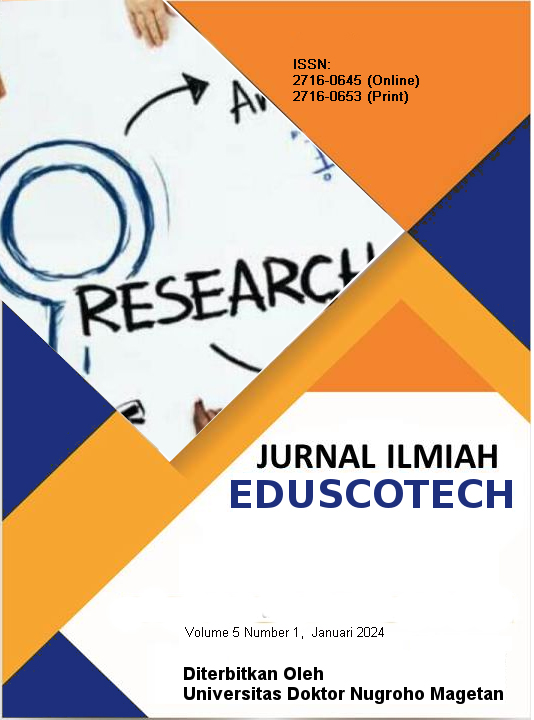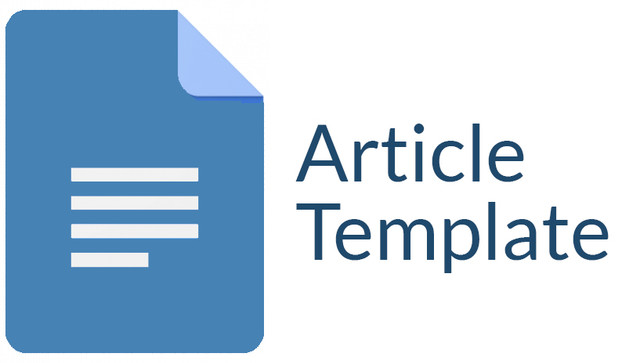Hubungan Kreativitas Guru Dengan Motivasi Belajar Dan Hasil Belajar Siswa Kelas IV Di SDN Maospati 1
Keywords:
Teacher Creativity, Learning Motivation, Learning Outcomes, Elementary School StudentsAbstract
This study aims to determine the relationship between teacher creativity and learning motivation and learning outcomes of fourth-grade students at SDN Maospati 1. Teacher creativity is one of the important factors in the learning process that can create an interesting, enjoyable learning atmosphere and motivate students to be more active in participating in learning. This study uses a quantitative approach with a correlational design. The population in this study were all fourth-grade students, and the sampling technique used purposive sampling. The instruments used were questionnaires to measure teacher creativity and student learning motivation, as well as documentation of grades to determine learning outcomes. The data obtained were analyzed using the Pearson Product Moment correlation technique and multiple regression. The results of the study showed that there was a positive and significant relationship between teacher creativity and student learning motivation. In addition, a significant relationship was also found between teacher creativity and student learning outcomes. Learning motivation was also proven to have a significant relationship with student learning outcomes. Simultaneously, teacher creativity and learning motivation contribute to improving student learning outcomes. Thus, this study confirms the importance of the role of teacher creativity in improving student motivation and learning outcomes. These findings recommend the need for teacher professional development in the aspect of learning innovation in order to optimally encourage student academic achievement.
Downloads
References
Amabile, T. M. (1996). Creativity in Context. Westview Press.
Dimyati, & Mudjiono. (2013). Belajar dan Pembelajaran. Jakarta: Rineka Cipta. Hamzah, B. U. (2014). Motivasi Belajar dan Peran Guru dalam Meningkatkan
Minat Belajar Siswa. Jakarta: Bumi Aksara.
Hosnan, M. (2014). Pendekatan Saintifik dan Kontekstual dalam Pembelajaran Abad 21: Kunci Sukses Implementasi Kurikulum 2013. Bogor: Ghalia Indonesia.
Munandar, U. (2009). Pengembangan Kreativitas Anak Berbakat. Jakarta: Rineka Cipta.
Nurkholis. (2013). Pendidikan dalam Upaya Memajukan Teknologi dan Kesejahteraan Bangsa. Jurnal Sosial Humaniora, 4(1), 56–68.
Marsini, M. (2023). The Effectiveness of the E-Library as a Learning Resource for Elementary School Students' Social Studies in Improving Literacy Skills. AL-ISHLAH: Jurnal Pendidikan, 15(3), 3726-3736.
Marsini, M. (2023). Motivasi Belajar Siswa pada Pembelajaran IPS di SDN Kraton VI Maospati. Jurnal Educatio FKIP UNMA, 9(1), 302-309.
Purwaningsih, L., Hadianti, A., & Marsini, M. (2022). PROTOTYPE DESIGN FLIPBOOK MEDIA IN TEACHING GRAMMAR “SIMPLE PAST TENSE”. Indonesian EFL Journal, 8(2), 287-294.
Rahardjo, M. (2010). Belajar dan Pembelajaran. Malang: UM Press.
Ryan, R. M., & Deci, E. L. (2000). Intrinsic and Extrinsic Motivations: Classic Definitions and New Directions. Contemporary Educational Psychology, 25(1), 54–67. https://doi.org/10.1006/ceps.1999.1020
Sardiman, A. M. (2011). Interaksi dan Motivasi Belajar Mengajar. Jakarta: Rajawali Pers.
Slavin, R. E. (2011). Educational Psychology: Theory and Practice (9th ed.).
Boston: Pearson.
Sugiyono. (2017). Metode Penelitian Kuantitatif, Kualitatif, dan R&D. Bandung: Alfabeta.
Uno, H. B. (2015). Teori Motivasi dan Pengukurannya: Analisis di Bidang Pendidikan. Jakarta: Bumi Aksara.
Winkel, W. S. (2012). Psikologi Pengajaran. Jakarta: Grasindo.
Wu, J., Barger, M. M., Oh, D., & Pomerantz, E. M. (2022). Parents’ daily involvement in children’s math homework and activities during early elementary school. Child Development, 93(5), 1347–1364. https://doi.org/10.1111/cdev.13774
Xu, J., Campbell, J. R., Civil, M., Ma, X., & Simpkins, S. D. (2023). The role of students' beliefs, parents' educational level, and attitude, motivation in mathematics achievement. International Journal of STEM Education, 10(4), 82–94. https://doi.org/10.1007/s40299-023-00724-2.
Downloads
Published
Issue
Section
License

This work is licensed under a Creative Commons Attribution-ShareAlike 4.0 International License.
Authors who publish with this journal agree to the following terms:
1. Copyright on any article is retained by the author(s).
2. The author grants the journal, right of first publication with the work simultaneously licensed under a Creative Commons Attribution License that allows others to share the work with an acknowledgment of the work’s authorship and initial publication in this journal.
3. Authors are able to enter into separate, additional contractual arrangements for the non-exclusive distribution of the journal’s published version of the work (e.g., post it to an institutional repository or publish it in a book), with an acknowledgment of its initial publication in this journal.
4. Authors are permitted and encouraged to post their work online (e.g., in institutional repositories or on their website) prior to and during the submission process, as it can lead to productive exchanges, as well as earlier and greater citation of published work.
5. The article and any associated published material is distributed under the Creative Commons Attribution-ShareAlike 4.0 International License









